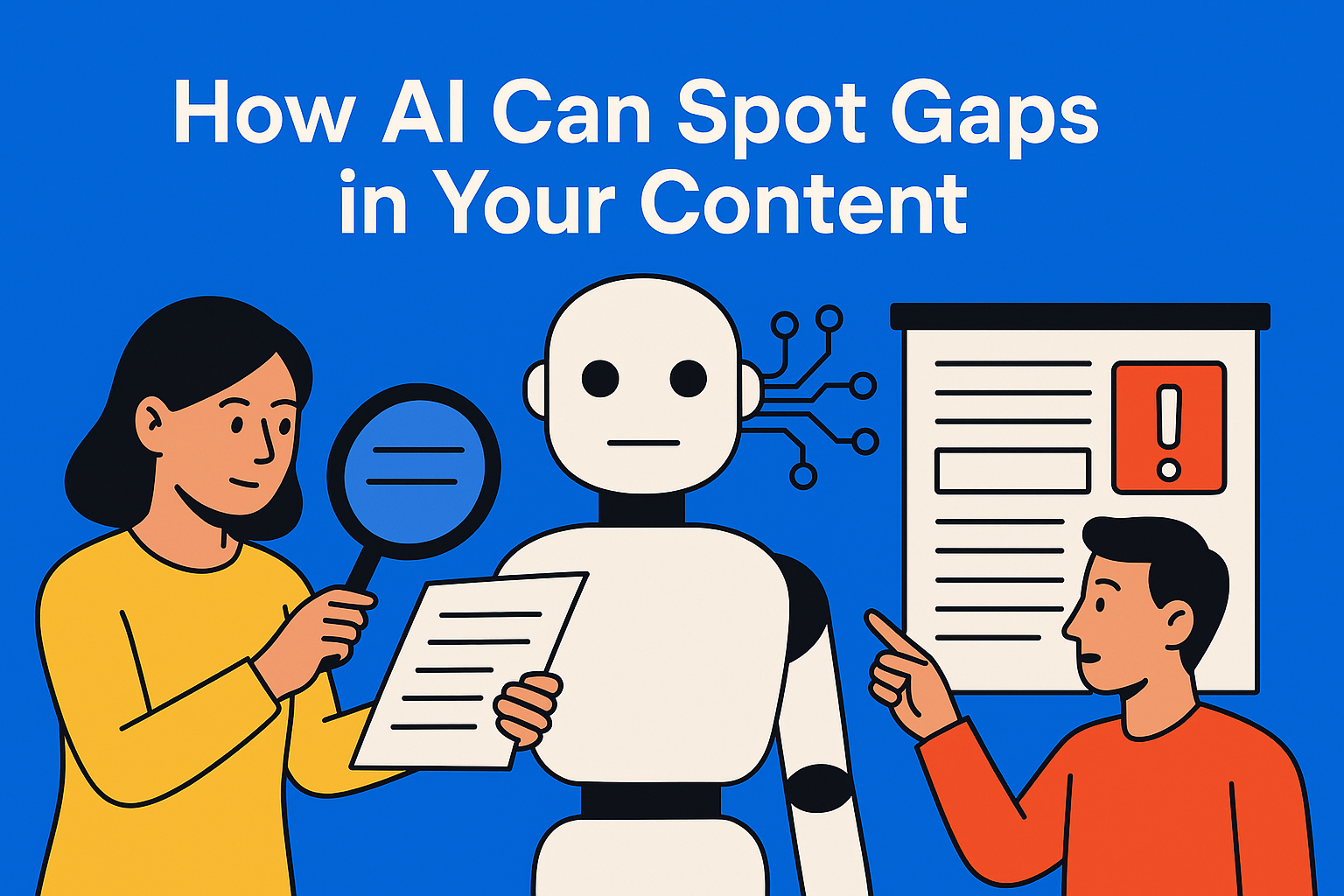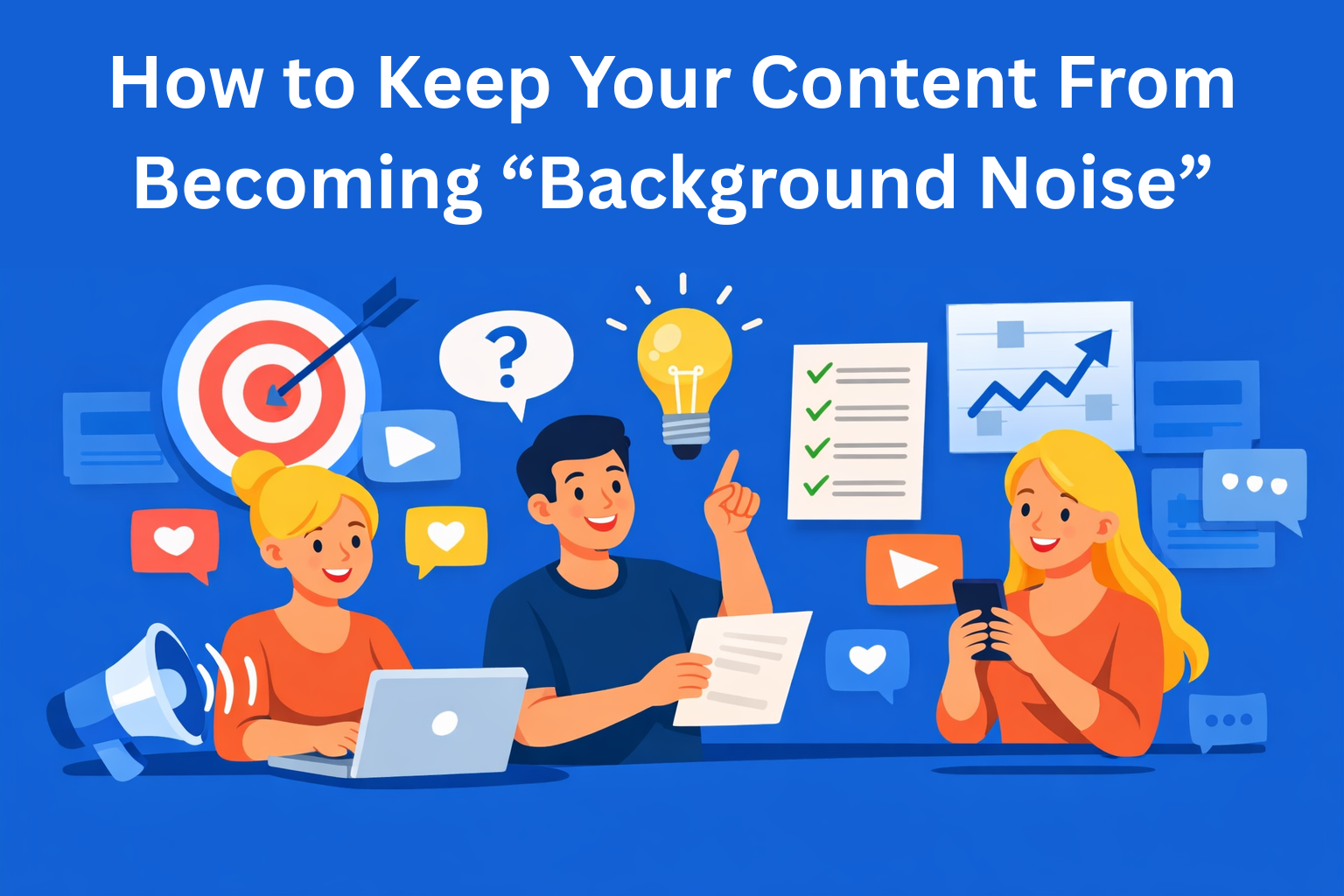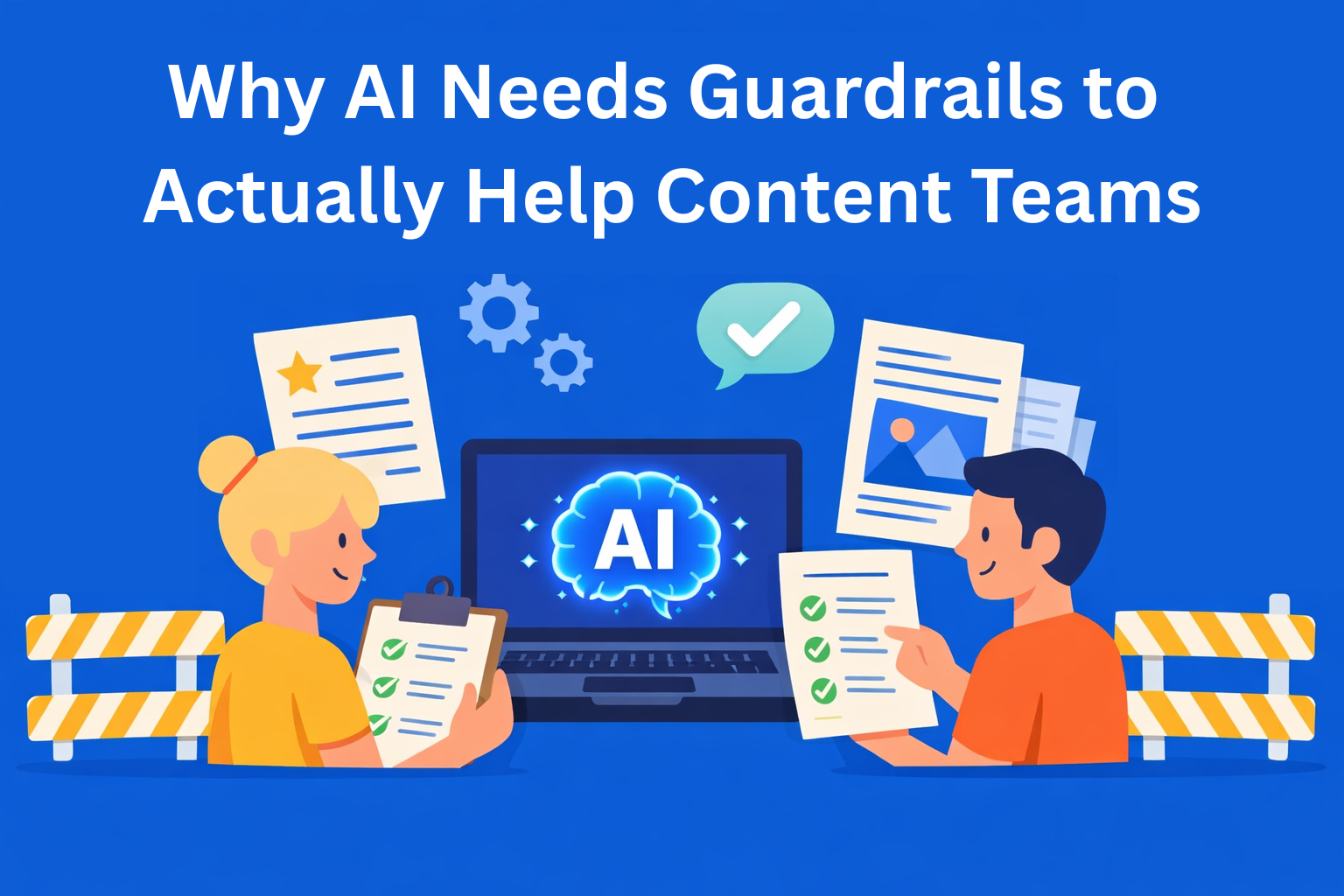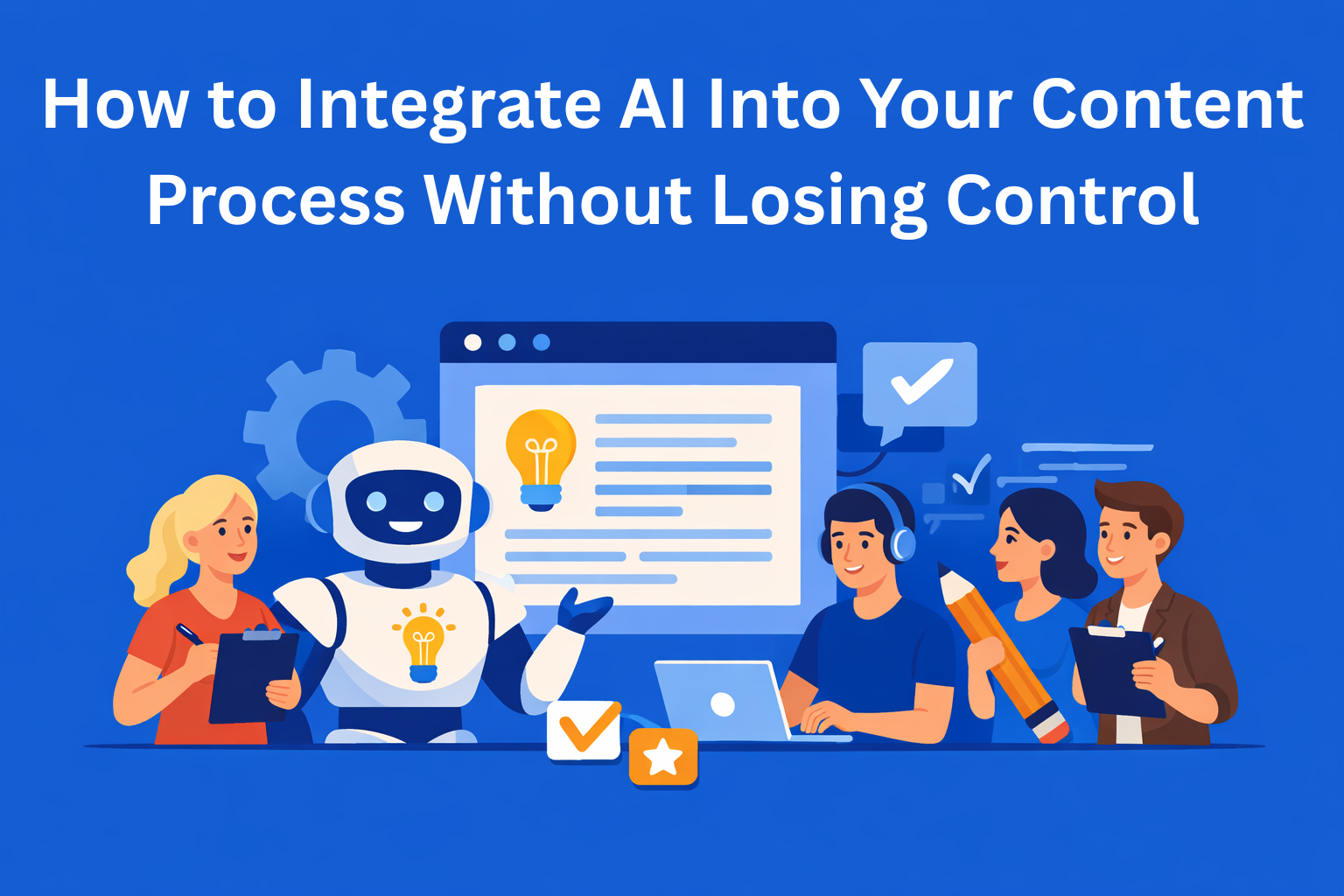How AI Can Spot Gaps in Your Content (That Humans Miss)
AI doesn’t get your style, but it easily spots what you miss. It helps you find gaps, unclear parts, and skipped topics. Like a second pair of eyes - fast, sharp, and always focused.

Let’s get one thing straight: AI doesn’t understand your content the way a reader would.
It doesn’t know their frustrations. It doesn’t “get” the subtext. It won’t catch your brand’s subtle tone shifts or sense that something is off in your intro. That kind of intuition? Still human territory.
But here’s the thing - AI also doesn’t get tired, distracted, or fall into a creative rut. It doesn’t get emotionally attached to a paragraph it wrote. And most importantly, it doesn’t miss things because it assumes they’re already there.
And that makes it incredibly good at one specific job: analyzing your content objectively and spotting gaps you (and your team) might missed.
Whether you’re auditing a blog post, reviewing a landing page, or optimizing a knowledge base article, AI can help surface things your brain skips right over.
Key Takeaways
- Humans skip things AI won’t - Our brains autopilot through drafts, while AI analyzes with zero assumptions or fatigue.
- AI can surface hidden content gaps - From missing steps to vague transitions and off-topic fluff, AI flags areas that need more clarity or depth.
- Prompt AI for targeted audits - Ask it to act like a new reader, compare with competitors, or simulate a skeptical critic to get more insightful feedback.
- Semantic coverage matters - AI can suggest related terms or subtopics based on SEO best practices that make your piece more complete.
- AI is the second set of eyes - not the final judge - Use its feedback to improve structure and completeness, but rely on your human touch for voice and message.
Why Humans Miss Content Gaps (And AI Doesn’t)
When you write or edit something (especially if you’ve looked at it 15 times), your brain starts to auto-complete the missing parts. You think the explanation is clear because you know what it’s supposed to mean.
We rely on experience and intuition, but sometimes that intuition works against us. We know our topic so well that we forget what it’s like to not know it.
AI doesn’t have that problem.
It looks at your content like a calculator would look at an equation: pattern-based, structured, and unemotional. That can make it dull as a writer, sure - but a fantastic second set of eyes for auditing.
Here’s what AI is great at catching:
- Missing explanations or steps
- Unclear transitions
- Lack of keyword coverage (especially semantically related terms)
- Thin sections with low depth
- Repetitive phrasing
- Off-topic tangents
It doesn’t understand why something’s off - it just sees that it is. And when you’re working fast or juggling multiple pieces, that kind of neutral analysis is gold. And the best part? You can write down what it should look for, so you can use it for each piece of content.
How to Use AI to Spot Content Gaps (4 Practical Techniques)
Now let’s get tactical.
Here are four effective ways to use AI to help you audit content, fill in gaps, and uncover insights you might miss on your own:
1. Ask AI What’s Missing from a Draft
Before you publish a blog post or landing page, paste it into your AI tool and ask:
“Read this piece like someone new to the topic. What important questions are left unanswered?”
You can also get more specific:
- “What sections feel underdeveloped or too thin?”
- “What’s the weakest part of this argument and why?”
- “What related concepts are usually included in articles about this topic that are missing here?”
This works best if you give the AI a little extra context about who the content is for. A simple note like:
“This article is for mid-level marketers looking to improve content strategy. Tone is helpful, not academic.”
…can sharpen the suggestions.
You won’t always agree with its feedback (nor should you), but it can uncover sections you assumed were clear and highlight missing context you didn’t even notice.
2. Use AI to Compare Your Content with Competitors
Another way to spot gaps? Stack your content next to the top-ranking pieces in your niche.
Use a tool like ChatGPT, Claude, or Gemini and feed it two inputs:
- Your article
- A competitor’s article (or two)
Then prompt:
“Compare these articles. What information is covered in theirs that’s missing in mine? What does mine do better? What should I consider adding?”
AI is great at cross-referencing. It’ll often find things you glossed over - a subtopic they touched on, a stat you forgot to include, or a takeaway you buried too deep.
Bonus: It can also flag when your piece is stronger than what’s out there. Knowing where you don’t need to change anything is just as helpful.
3. Prompt for Semantic and Topical Coverage
Google doesn’t just care about keywords anymore - it cares about topics and relationships between terms (semantic SEO).
AI can help you identify related terms and subtopics your content should include.
Try this:
“Here’s a blog post about X. Based on semantic SEO best practices, what related terms or topics should this piece include to be more comprehensive?”
Or even:
“What subtopics or FAQs do readers often look for in articles about X?”
Use the output to check for blind spots. You might realize you’ve written an entire post about email automation and never once mentioned segmenting your list. AI won’t write that section for you (at least not well), but it will remind you that it needs to exist.
In EasyContent, content managers can even bake this step into the creation process using templates. For example, a blog post template could include a checklist or guidelines for semantic coverage - helping writers preempt gaps before they happen.
4. Let AI Play the Skeptical Reader
Sometimes, the most valuable feedback is a raised eyebrow.
Ask your AI tool to act as a skeptical reader or reviewer. Try prompts like:
“Pretend you're a critical reader who doesn’t buy into this topic. What arguments in this article are weak, unsupported, or too vague?”
Or:
“What questions might a reader still have after reading this?”
AI will surface soft spots in your logic (vague claims, missing examples, weak transitions) that a busy editor or invested writer might gloss over. Use this to tighten your arguments and strengthen the story arc.
Remember, the goal isn’t to rewrite the whole thing with AI. It’s to identify where your current version could be more complete, convincing, or helpful.
Don’t Replace Human Judgment - Support It
Let’s be clear: AI shouldn’t replace your editor. And it definitely shouldn’t be the final authority on what’s “good enough.”
But used smartly, it can be an incredibly effective support tool - the kind that catches things even seasoned writers miss.
This is especially powerful in teams, where content moves fast and everyone’s juggling multiple deadlines. Giving writers and editors a quick way to run their work through a neutral checker saves time and lifts the overall quality.
If your team is using a platform like EasyContent, you can go one step further and turn this process into part of your workflow. Templates and review steps can include AI-assisted self-checks, helping writers flag issues before the content ever reaches an editor.
You can even add custom fields for things like:
- “Did you run this through AI for content gap analysis?”
- “List any missing subtopics identified during AI audit.”
This helps build a repeatable process where AI is the assistant, not the author - and humans stay firmly in control of the voice, tone, and storytelling.
Conclusion
AI doesn’t understand your content like you do. It won’t know your customer pain points, your brand story, or your inside jokes.
But what it does understand is structure, completeness, and patterns. And when you’re deep into a piece, those are the things you’re most likely to overlook.
Let AI be the assistant tapping you on the shoulder to say:
“Hey, you missed something here.”
Use it to catch what your brain glossed over. Use it to sharpen the structure. Use it to strengthen the story.
And then (once the gaps are filled), use your human intuition, creativity, and voice to turn that well-rounded piece into something great.






